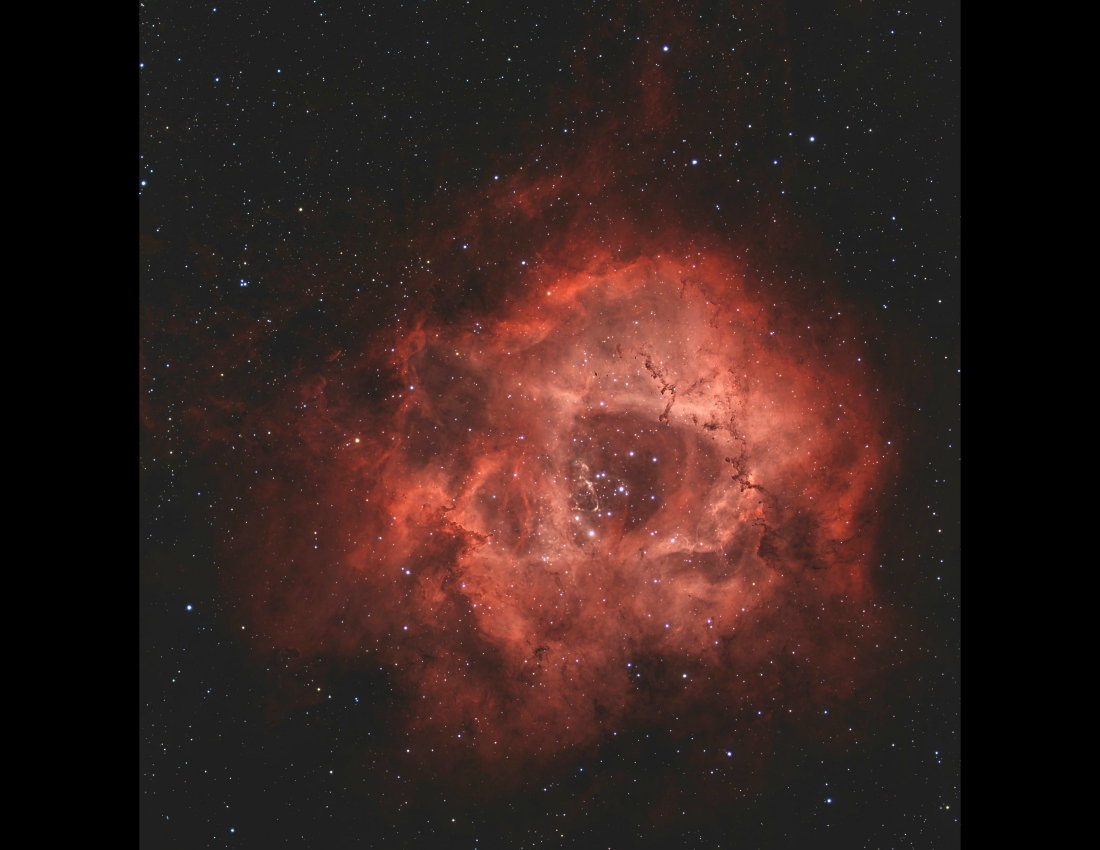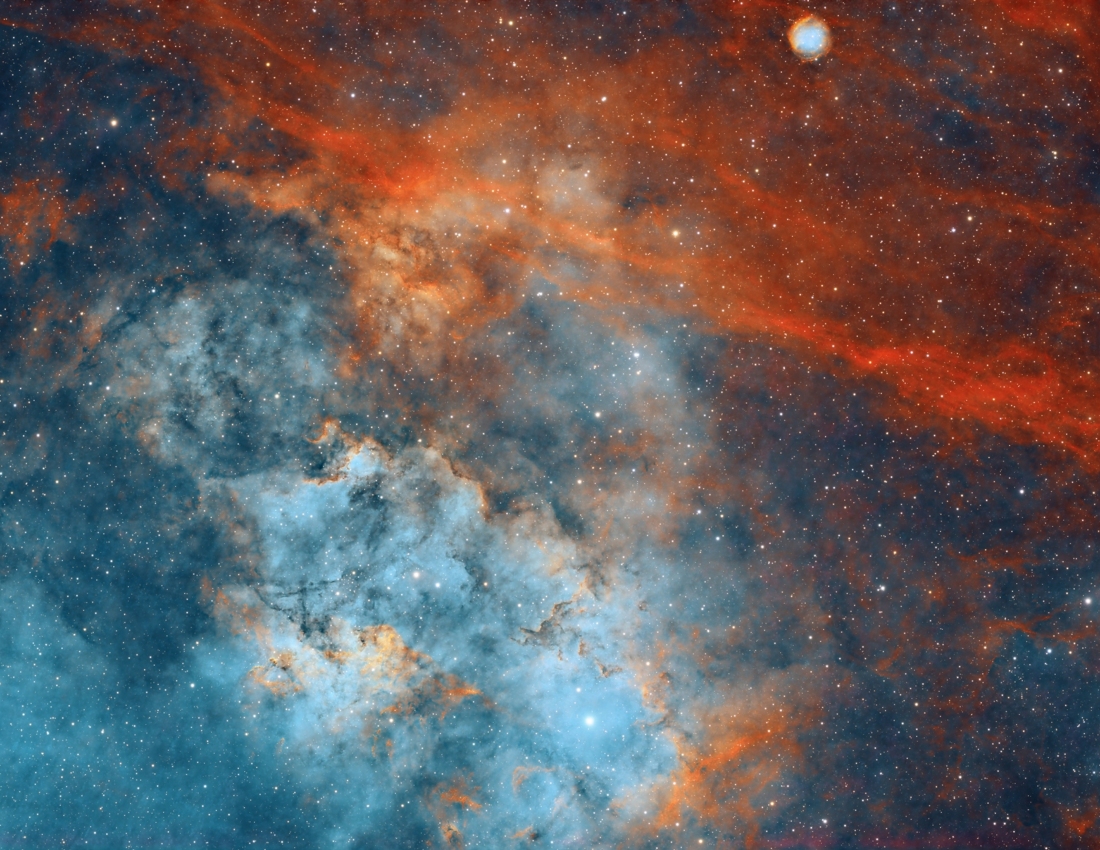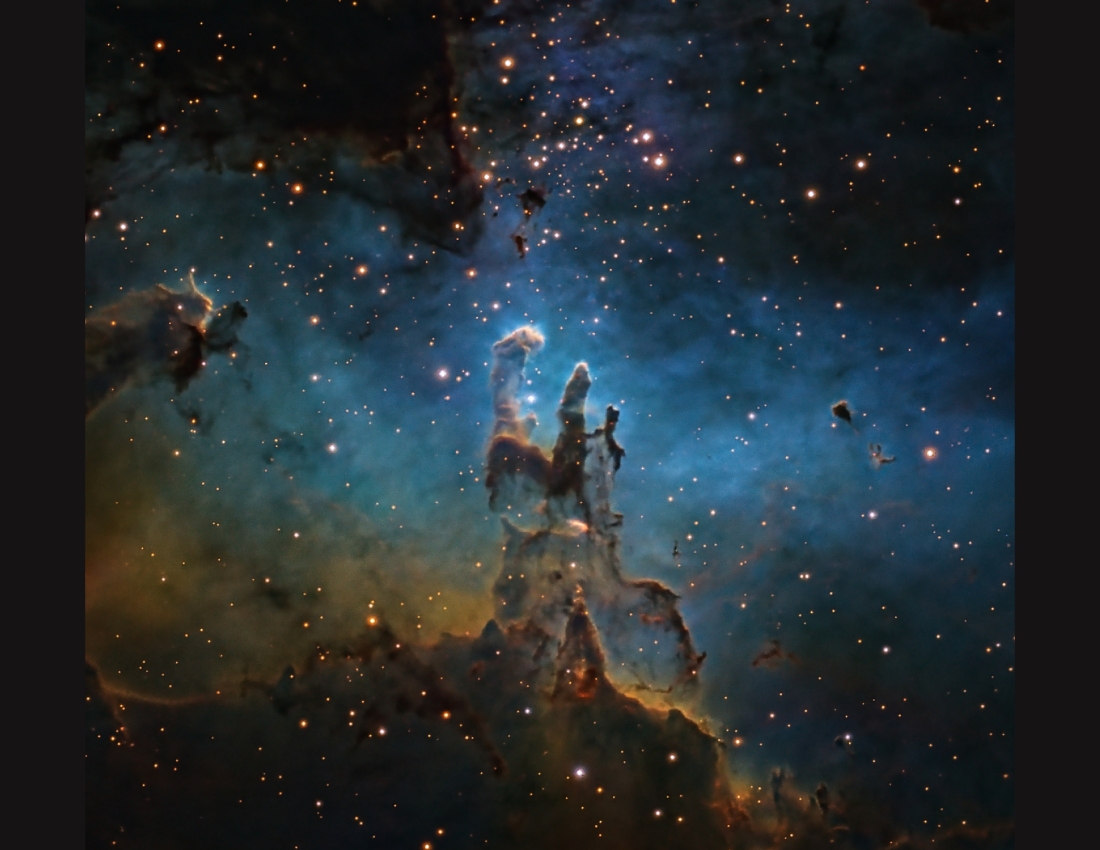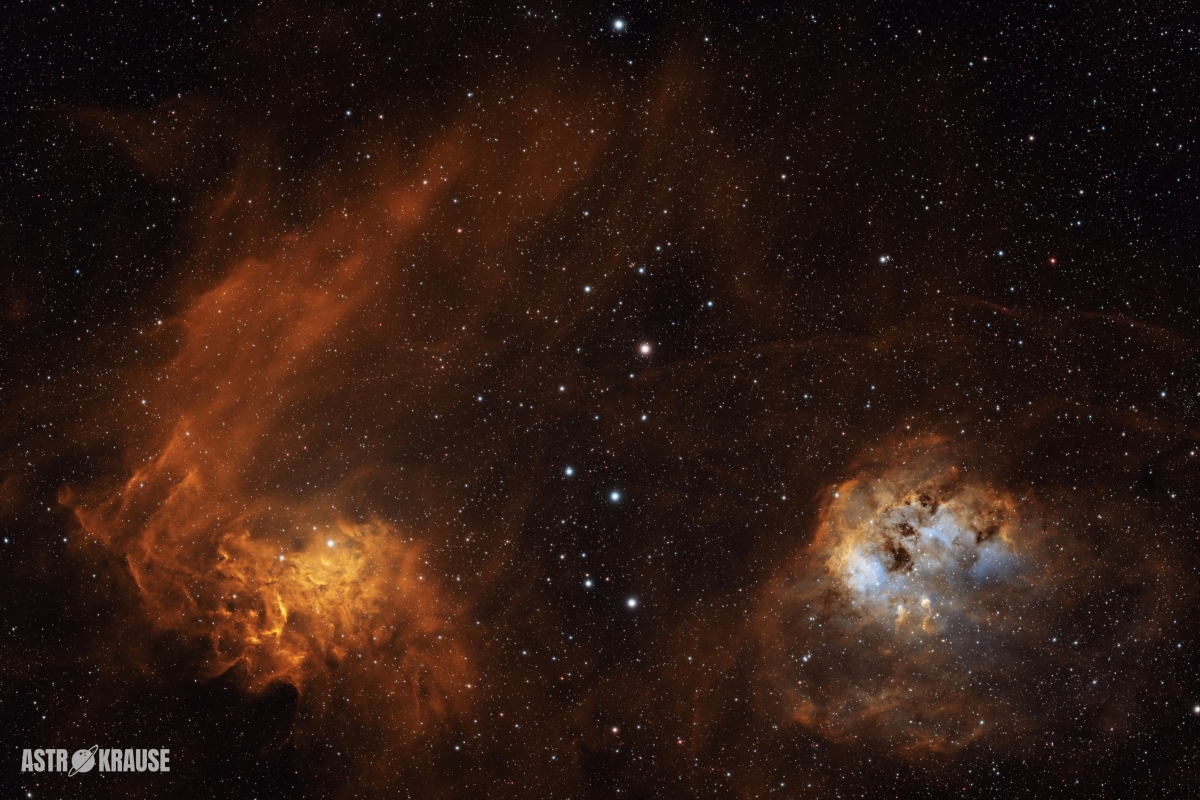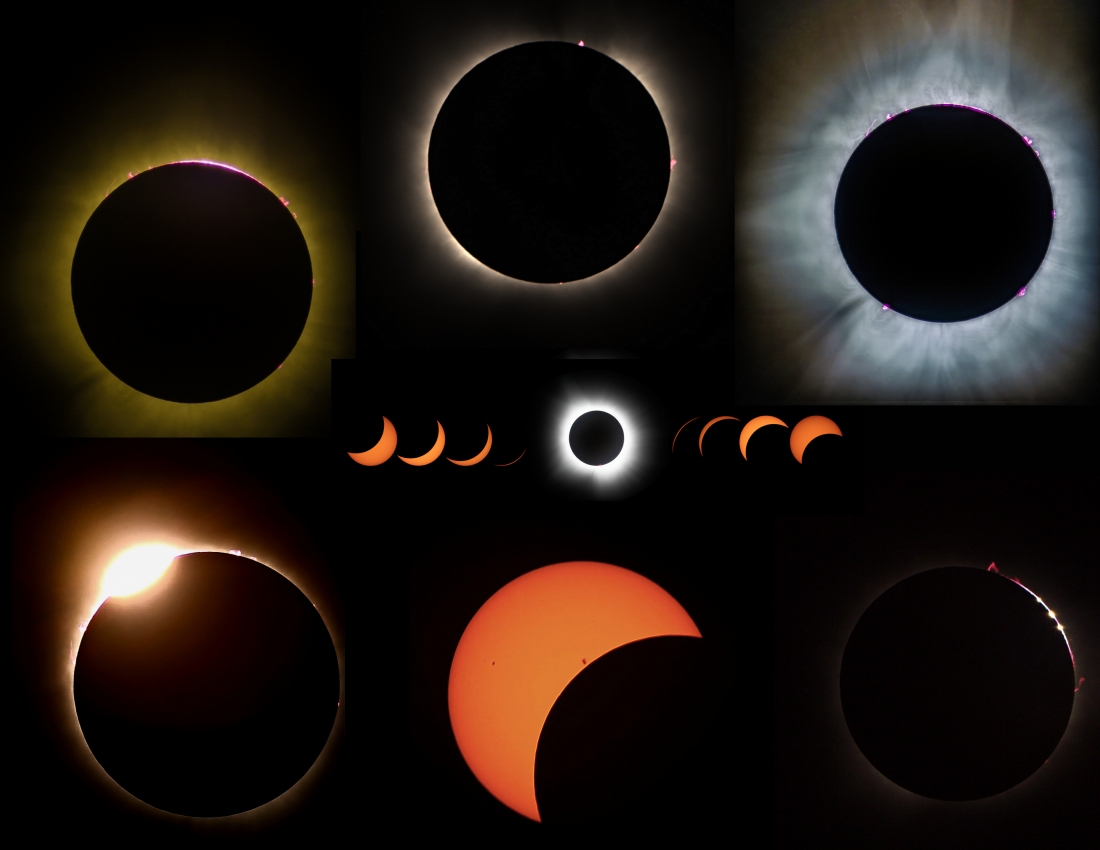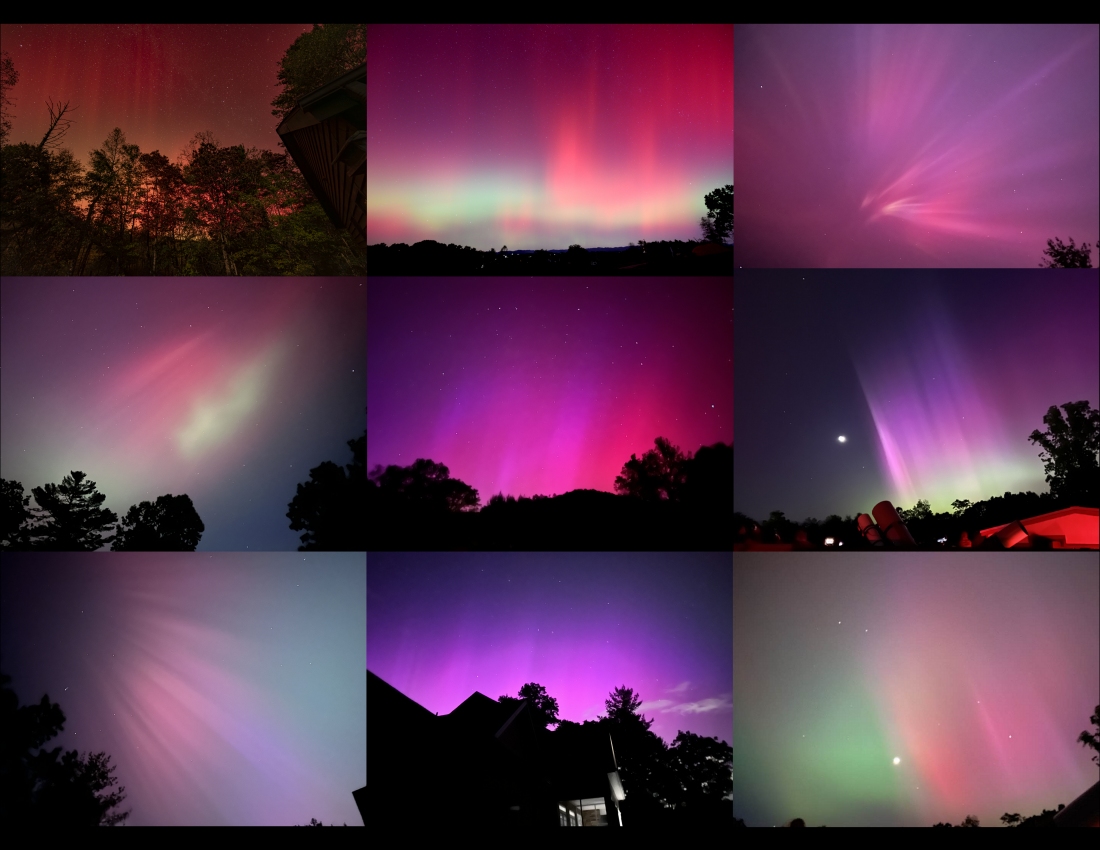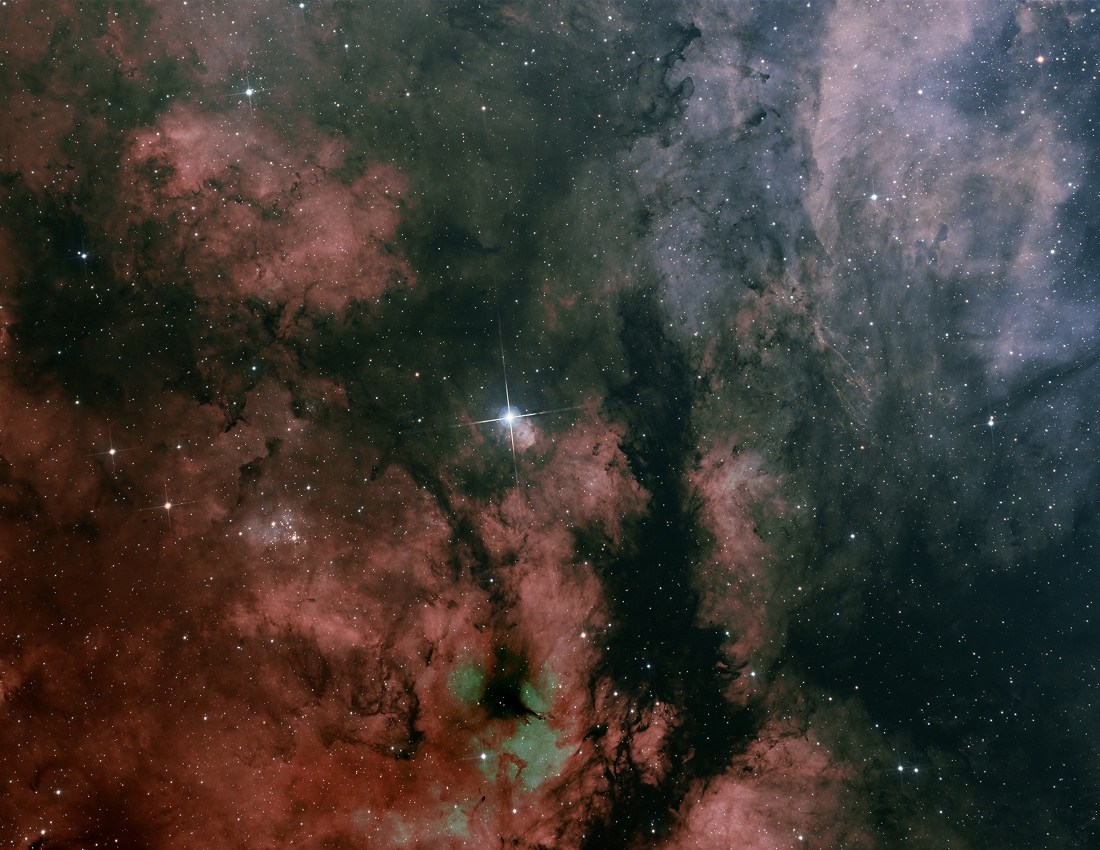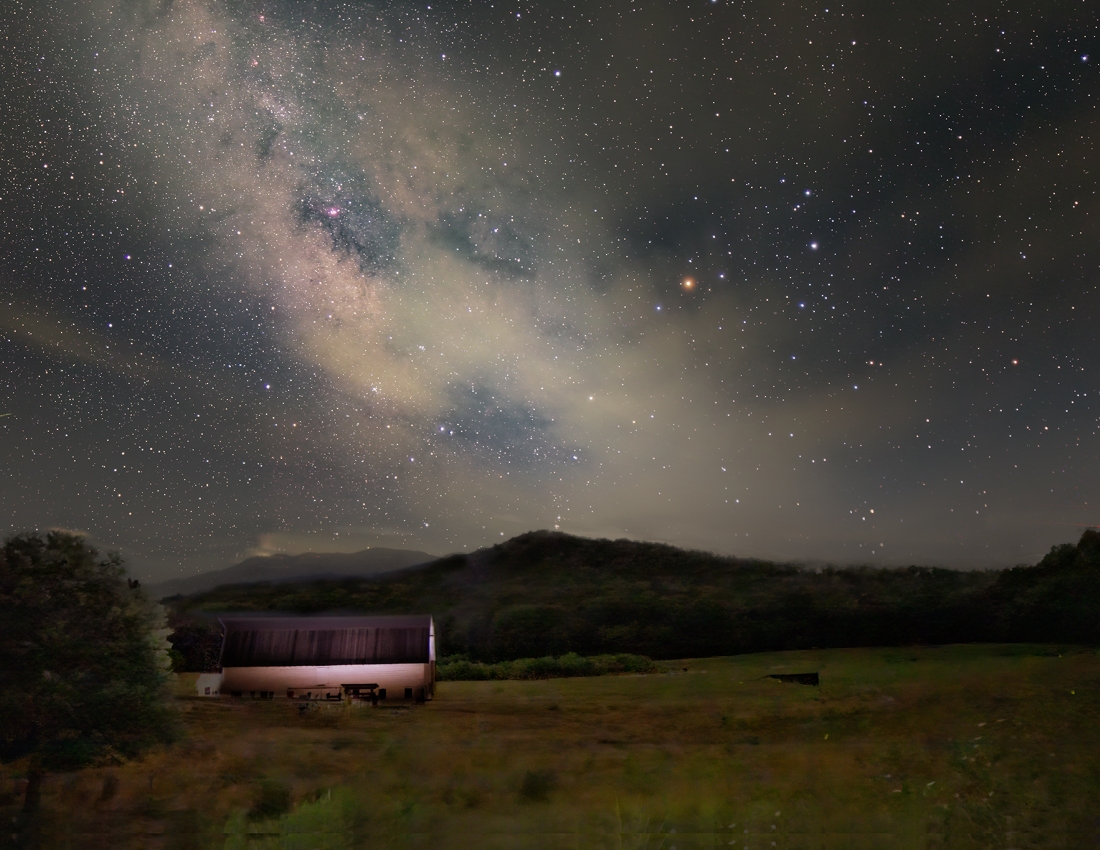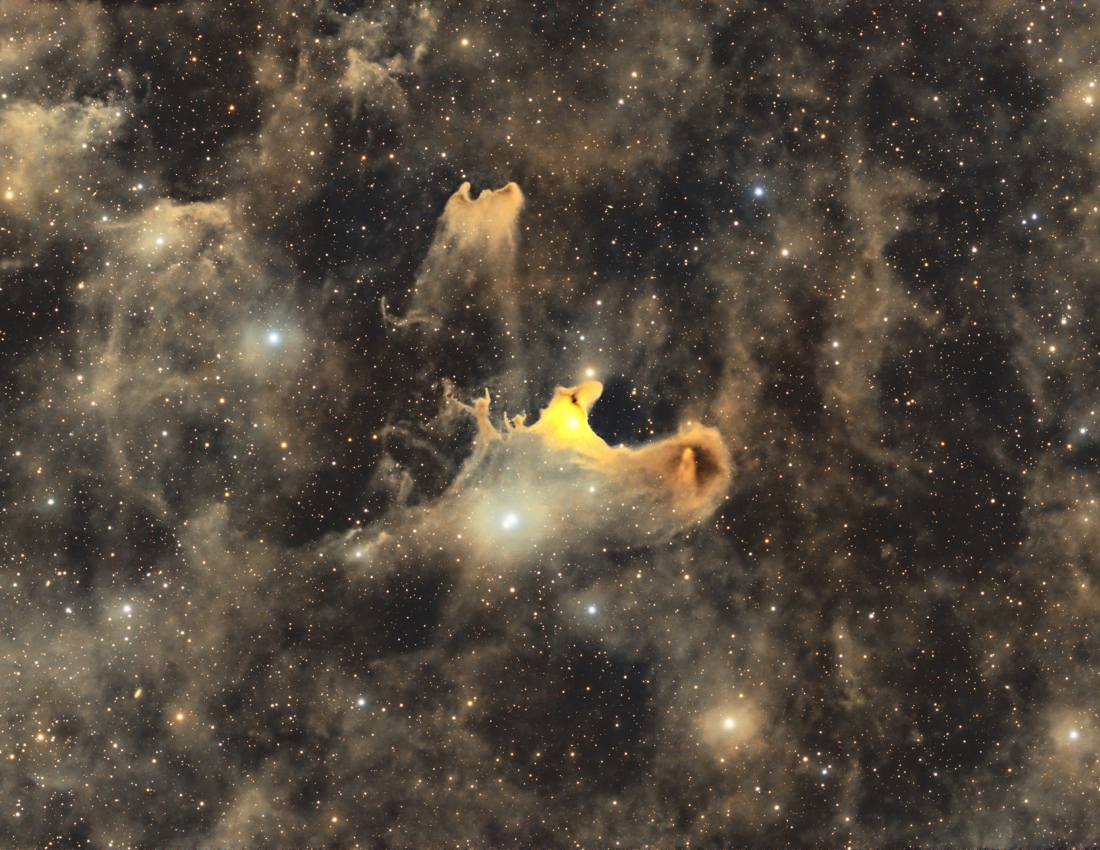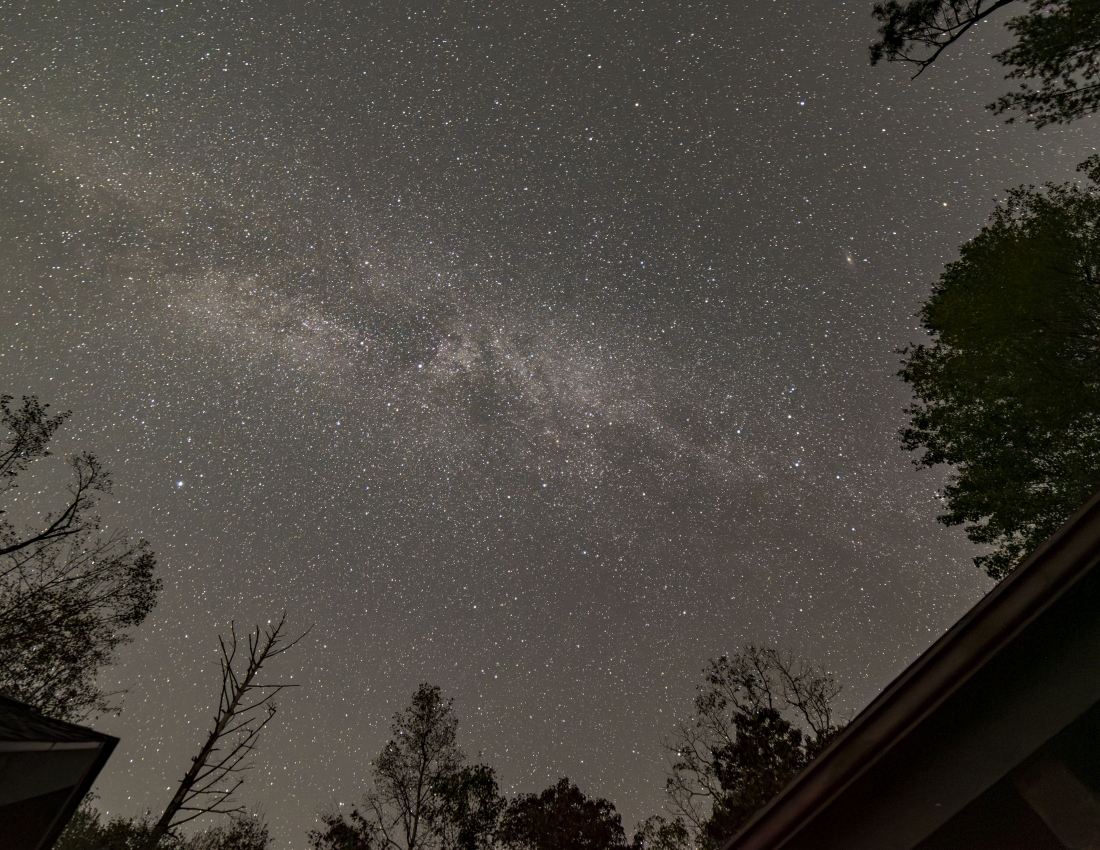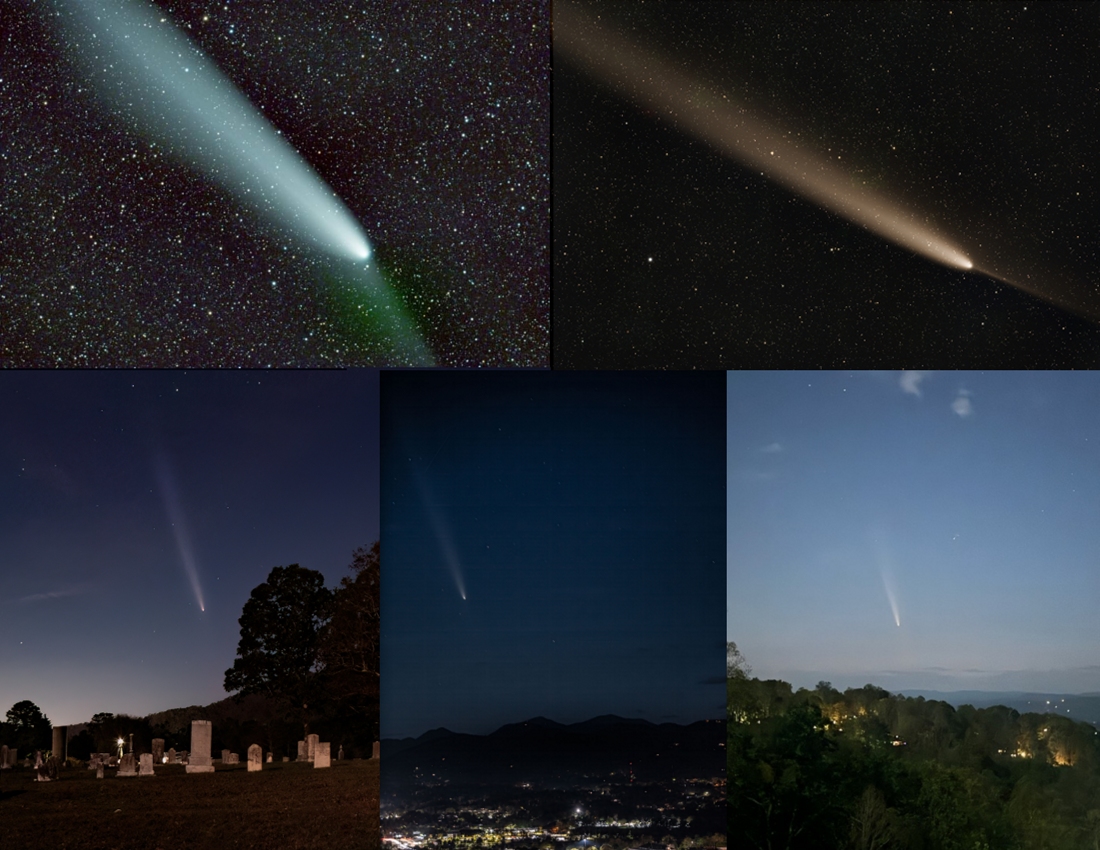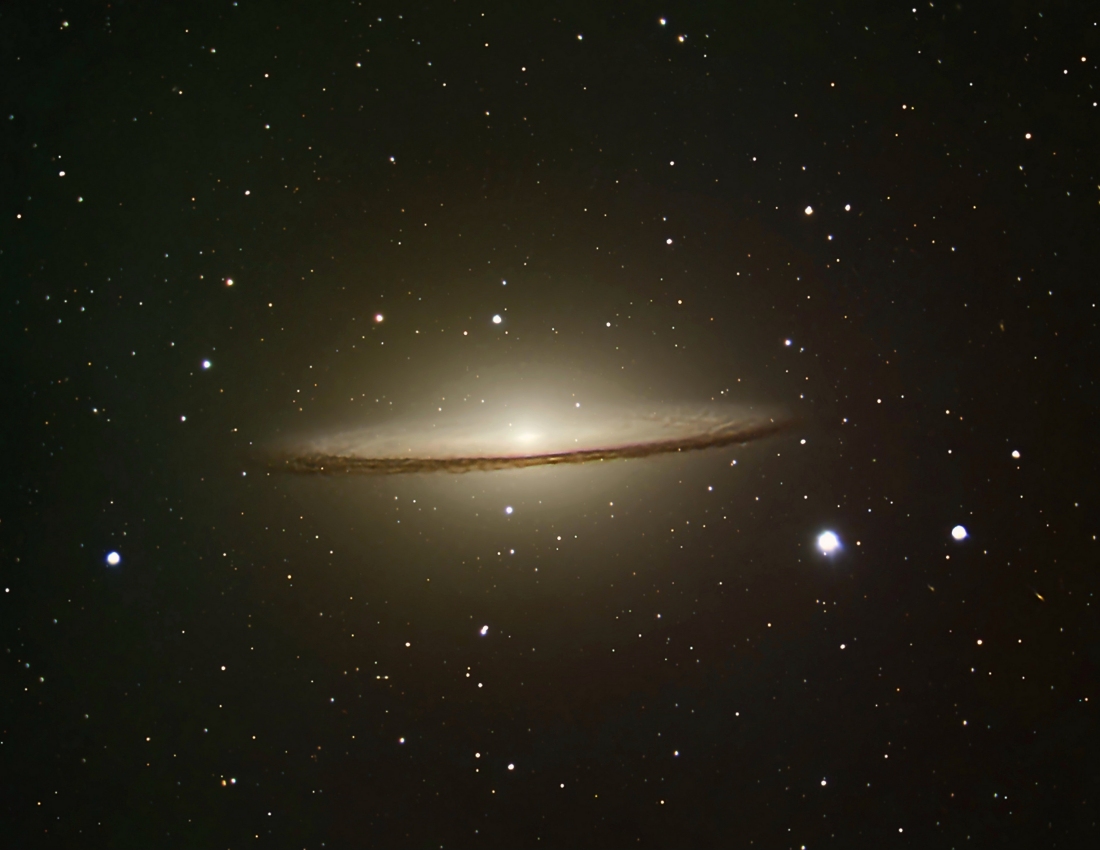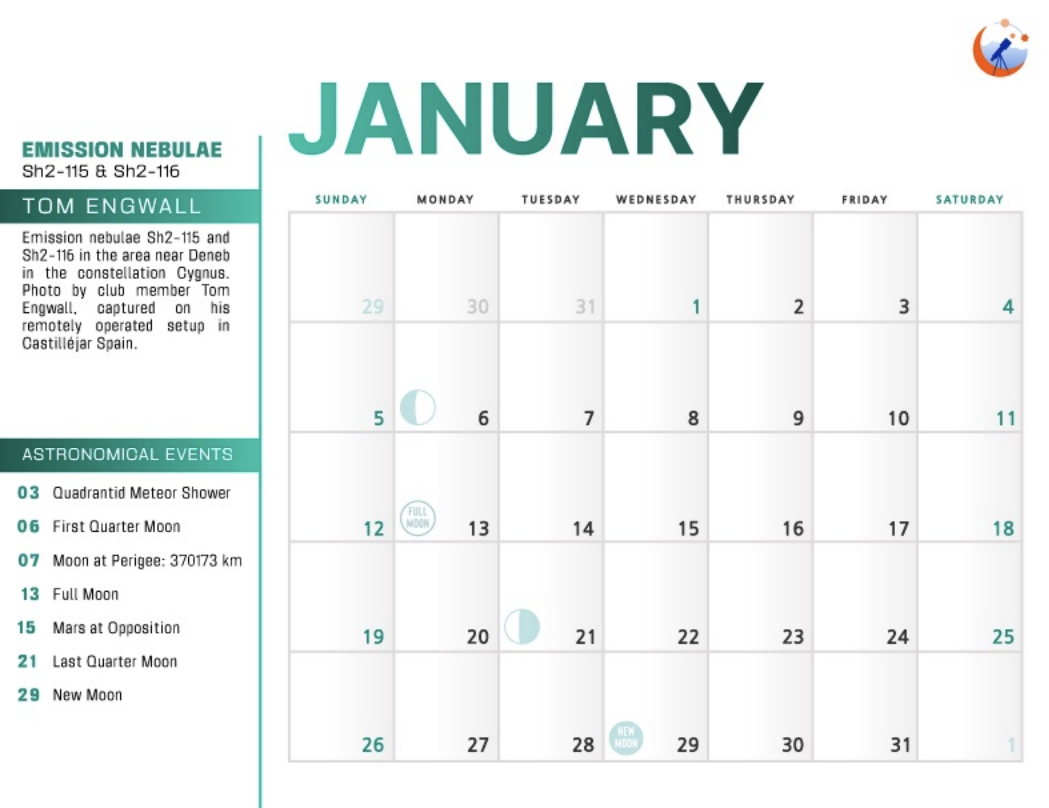The Astronomy Club of Asheville 2025 calendar is here!
Scroll Down to Find Out How to Purchase Your Calendar
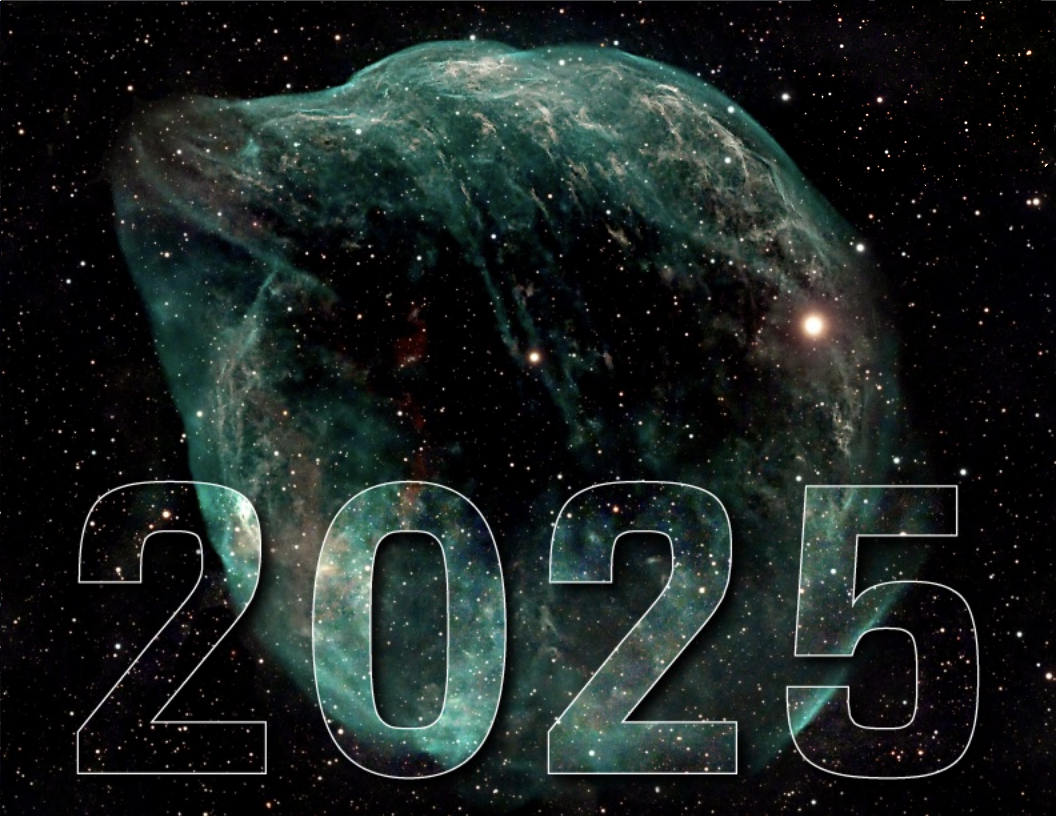
Calendar cover: Sh2-308, commonly called The Dolphin-Head Nebula, about 4,500 light years distant in the constellation Canis Major. Photo by club member Knox Worde.
About the Club Calendar:
All 13 images in this 8.5 x 11 inch calendar were taken by club members during 2024, and what a year it was! The solar eclipse in April, the extraordinary aurora borealis in this year of peak solar activity, Comet C/2023 A3 (Tsuchinshan–ATLAS) in October all made 2024 a memorable one. Hurricane Helene left many homes and businesses without power, and many street lights were off, so although the devastation was tragic, our skies were darker than usual, and the Milky Way shined brightly in the darkened sky. Club members were out at night with their telescopes and cameras all year long, sharing the wonders of the night sky.
How to order:
Calendars are $25 each. Use the PayPal link below. In the PayPal checkout screen, enter “Calendar” in the “Description” field, then multiply the number of calendars you are ordering by $25, and enter that amount in the “Price per item” field. Ignore the “Quantity” field. Then click the “Continue” button.
How to pick up your calendar:
We will be distributing the calendars from noon until 2 PM on Saturday, December 21, and on Saturday, January 4, 2025 at the Reuter Center on the north end of the UNC-A campus. Click here for a map of the UNC-A campus. Please note, we will only be distributing pre-paid calendars on these dates.

Here’s a preview of the photos in the 2025 calendar. Click on the images to see larger views in a slideshow.
![2025 Calendar cover 2025 Calendar cover]()
COVER: Sh2-308, commonly called The Dolphin-Head Nebula, about 4,500 light years distant in the constellation Canis Major. Photo by club member Knox Worde.
![02_January_Tom_Engwall_Sh2_115_and_Sh2_116]()
January: Emission nebulae Sh2-115 and Sh2-116 in the area near Deneb in the constellation Cygnus. Photo by club member Tom Engwall, captured on his remotely operated setup in Castilléjar Spain.
![03_February_David_Krause_PillarsOfCreation]()
February: The Pillars of Creation in the Eagle Nebula (M16), about 7,000 light years away. Photo by club member David Krause.
![04_March_David_Krause_FlamingStar_and_Tadpoles 04_March_David_Krause_FlamingStar_and_Tadpoles]()
March: The Flaming Star and Tadpole Nebulae, large emission nebulae located in the constellation Auriga. Photo by club member David Krause.
![05_April_Solar_Eclipse_Composite]()
April: Composite of photos by club members of the April 8, 2024 total solar eclipse.
![06_May_Aurora_composite]()
May: The Asheville area had several rare and spectacular aurora events in 2024, the result of our active Sun’s giant X-class solar flares that launched energetic electrons and protons into the Solar System. Photos by club members on the nights of May 20 and October 10, 2024.
![07_June_Tommy_Wilkinson_Sadr_Region]()
June: The Sadr Region is the diffuse emission nebula surrounding Sadr at the center of Cygnus's cross. Sadr lies within the Milky Way galaxy about 1,800 light years from Earth. Photo by club member Tommy Wilkinson.
![08_July_Tommy_Wilkinson_Pasture Barn]()
July: Our galaxy, the Milky Way, from the Warren Wilson College campus, near Asheville. Photo by club member Tommy Wilkinson.
![09_August_Tom_Engwall_Ghost_Nebula]()
August: The Ghost Nebula (Vdb 141 / Sh2-136) is located in the constellation Cepheus about 1,470 light years away and is over 2 light-years across. Photo by club member Tom Engwall, captured on his remote setup in Castilléjar Spain.
![10_September_Alan_Davis_Backyard Milky Way]()
September: With the electrical grid mostly offline after Hurricane Helene devastated much of the Asheville area, dark skies allowed the Milky Way to shine brighter than usual. Photo by club member Alan Davis.
![11_October_Comet_A3_Atlas_Composite]()
October: Comet C/2023 A3 (Tsuchinshan–ATLAS) was easily visible for about 3 weeks in the early evening skies during October, 2024, and several Astronomy Club of Asheville members were able to capture some extraordinary photos of this visitor from the Oort Cloud.
![12_November_Vince_Castello_Rosette_Nebula]()
November: The Rosette Nebula is an H II (atomic Hydrogen that is ionized) region located near one end of a giant molecular cloud in the Monoceros region of the Milky Way Galaxy (near Orion). The cluster and nebula lie at a distance of about 5,000 light-years from Earth. Photo by club member Vince Castello.
![13_December_Vince_Castello_M104_Sombrero_Galaxy_2024]()
December: The Sombrero Galaxy is located about 30 million light-years away in the constellation Virgo, and with a mass equal to 800 billion suns, it is one of the most massive objects in the Virgo galaxy cluster. Photo by club member Vince Castello.
![Month_Sample_January_2025 Month Sample January 2025]()
2025 Club Calendar sample month

